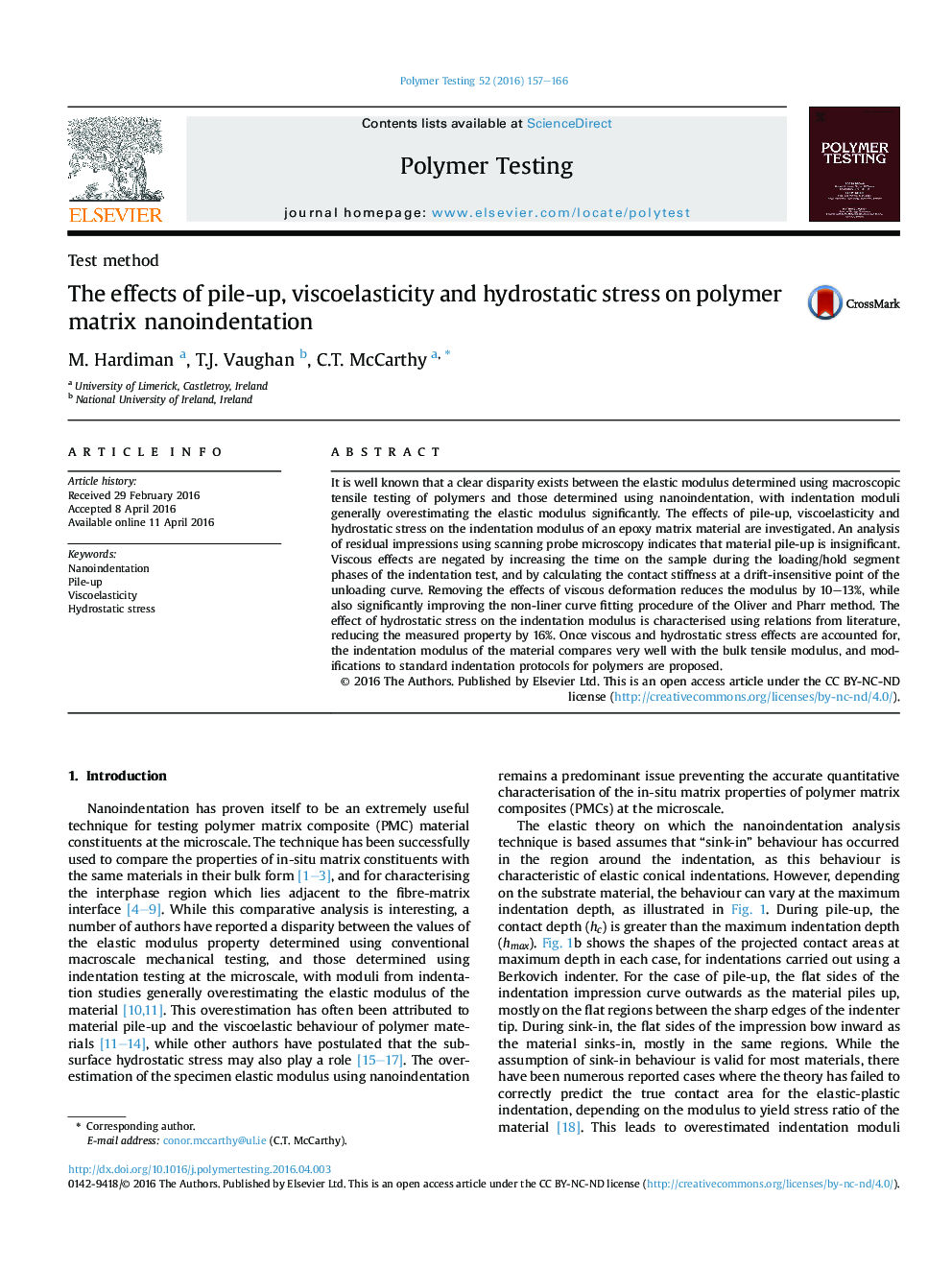| Article ID | Journal | Published Year | Pages | File Type |
|---|---|---|---|---|
| 5205645 | Polymer Testing | 2016 | 10 Pages |
It is well known that a clear disparity exists between the elastic modulus determined using macroscopic tensile testing of polymers and those determined using nanoindentation, with indentation moduli generally overestimating the elastic modulus significantly. The effects of pile-up, viscoelasticity and hydrostatic stress on the indentation modulus of an epoxy matrix material are investigated. An analysis of residual impressions using scanning probe microscopy indicates that material pile-up is insignificant. Viscous effects are negated by increasing the time on the sample during the loading/hold segment phases of the indentation test, and by calculating the contact stiffness at a drift-insensitive point of the unloading curve. Removing the effects of viscous deformation reduces the modulus by 10-13%, while also significantly improving the non-liner curve fitting procedure of the Oliver and Pharr method. The effect of hydrostatic stress on the indentation modulus is characterised using relations from literature, reducing the measured property by 16%. Once viscous and hydrostatic stress effects are accounted for, the indentation modulus of the material compares very well with the bulk tensile modulus, and modifications to standard indentation protocols for polymers are proposed.
